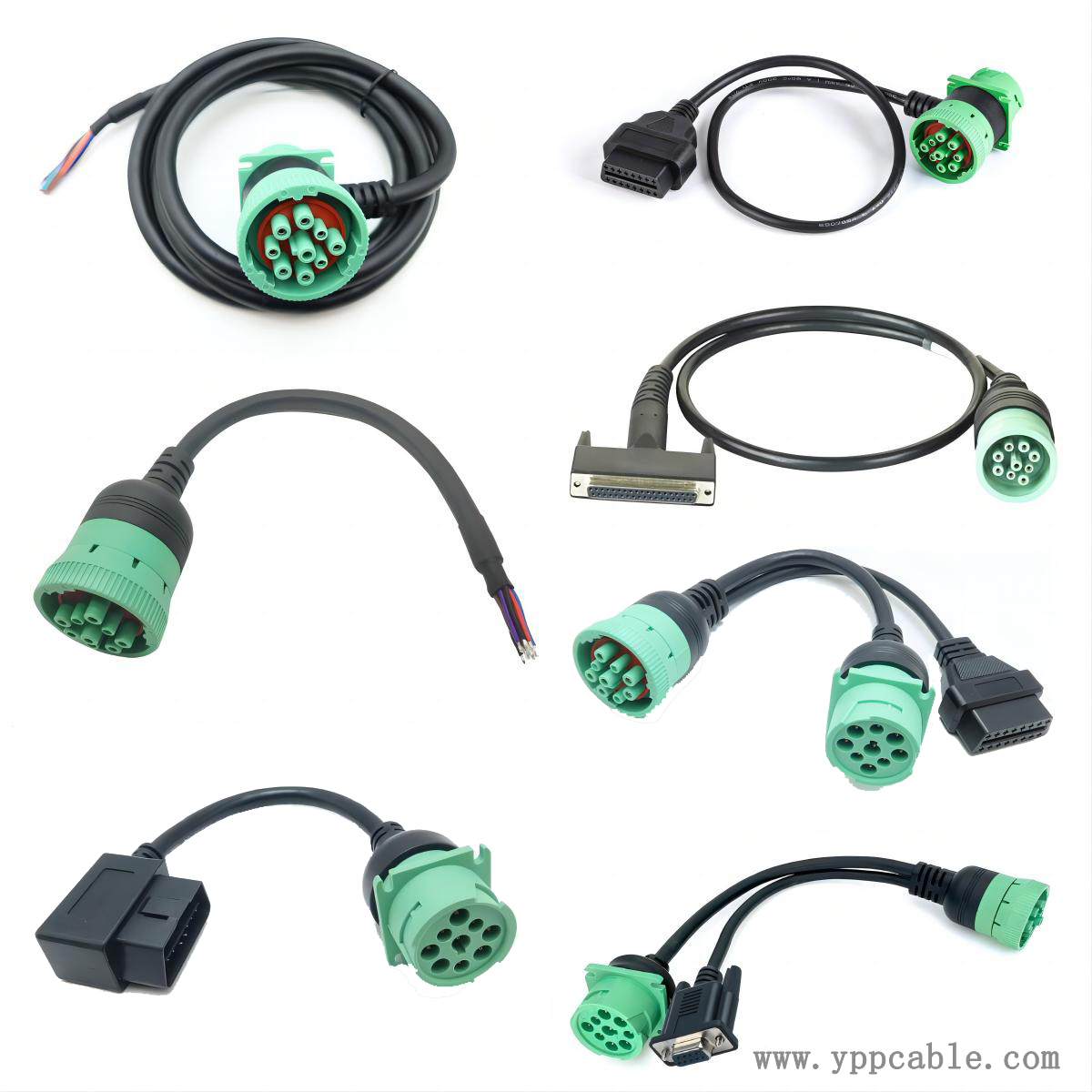J1939 cable is a communication cable based on CAN (Controller Area Network) bus technology, mainly used for communication between electronic control units (ECUs) in fields such as vehicles and industrial equipment. Its working principle mainly involves the following aspects:

physical layer
J1939 cables usually use twisted pair cables as transmission media, with two wires called CAN-H and CAN_L. In a stationary state, the voltage difference between CAN_S and CAN_L is 0V, indicating an implicit level. When there is data transmission, the voltage of CAN-H will increase to about 3.5V, and the voltage of CAN_L will decrease to about 1.5V, with a voltage difference of 2V, manifested as a dominant level. By representing binary "0" and "1" through the variation of high and low levels, data transmission is achieved.
data link layer
Data frame format: The J1939 protocol specifies multiple types of data frames, among which the most commonly used is the standard data frame. It consists of an arbitration segment, a control segment, a data segment, a CRC segment, an ACK segment, and a frame end segment. The arbitration segment contains identifiers used to determine information such as data priority and transmission direction. The control segment contains information such as data length code, while the data segment is the actual content of the data to be transmitted. The CRC segment is used to verify the correctness of the data, the ACK segment is used to provide feedback confirmation information to the receiver, and the frame end segment marks the end of the data frame.
Arbitration mechanism: When multiple ECUs simultaneously send data to the bus, J1939 adopts an identifier based arbitration mechanism. The smaller the identifier, the higher the priority. During the arbitration process, each ECU listens to the bus while sending data. If it finds that the bits it sends are inconsistent with the bits on the bus, it will automatically stop sending and allow the ECU with higher priority to continue sending data, thereby avoiding data conflicts.
network layer
The J1939 protocol defines functions such as network management and address allocation. Each ECU in the network has a unique address, and through network management mechanisms, the ECU can automatically obtain the address and perform network initialization and synchronization operations. At the same time, J1939 also supports multi master station communication mode, where any ECU can send data to the bus when needed, achieving information exchange and collaborative work between various ECUs.
application layer
At the application layer, the J1939 protocol defines various message types and data formats to meet the needs of different application scenarios. For example, in a car, it can define the transmission format and meaning of various parameters such as engine speed, vehicle speed, oil temperature, etc. Each ECU parses and processes the received data according to the application layer protocol, and sends corresponding control instructions or status information as needed, thereby achieving various functional control and status monitoring of vehicles or equipment.
Contact: Kevin Yu
Phone:
E-mail: yppcable@126.com
Whatsapp:
Add: FL2,Bld 6, Hongte Industrial Park, Yongtou , Changan, Dongguan, Guangdong